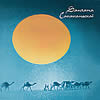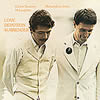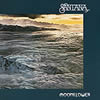|
Near the end of January'73 Santana began a massive world tour that would encompass more than three hundred dates and further spread their fame to virtually every city on the planet. In the middle of the tour Carlos married Deborah King, his soul mate for life. Still a disciple of Sri Chinmoy, he was supremely happy with his life and his band, the new Santana now featuring the former Count Basie/Pharoah Sanders vocalist Leon Thomas and the incomparable keyboard duo of Tom Coster and Richard Kermode. With master drummer Armando Peraza on congas and bongos, Jose "Chepito" Areas on timbales, and the ever-resourceful Michael Shrieve on drums along with the extraordinary Doug Rauch on bass, this was indeed a formidable unit, one worthy of comparison with any band of its time without question.
|
|
|
|
|

|





